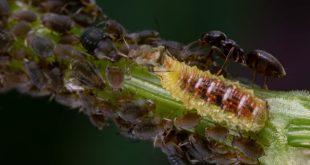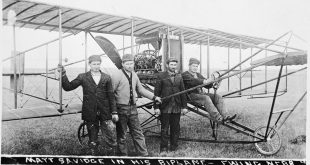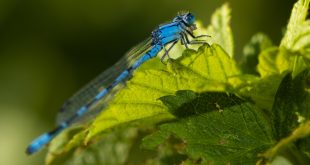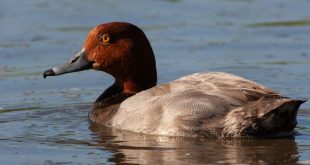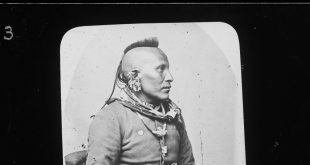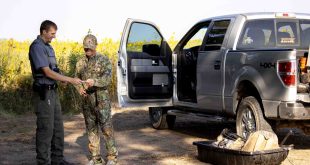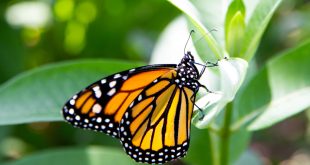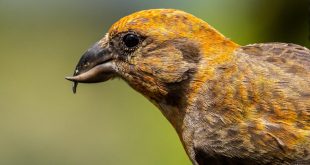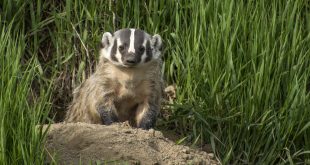Ants raise aphids to harvest their sugar-rich waste secretions known as honeydew. By Tyler Moore, Bellevue University With more than 15,000 described species of ants, as noted in “Bolton’s Catalogue of the Ants of the World,” these organisms are among the world’s most successful and represent a total estimated biomass of 12 megatons. They have also long been the subject of amateur naturalists and scientists, with perhaps no behavior more intriguing than the “farming” of aphids. Aphids are commonly known …
Read More »October At-Risk Species – Spooky Important Species
Halloween’s “scary” creatures of the night are not as spooky as they appear. By Olivia DaRugna, Wildlife Diversity Biologist With Halloween right around the corner, let’s highlight a few critters that get a bad rap in scary movies and TV specials. Bats Bats are often portrayed as spooky, flying creatures of the night in Halloween movies, yet globally, they provide important ecosystem services, such as pest consumption, plant pollination and seed dispersal. They use flight and echolocation to catch and …
Read More »The Baysdorfers – Nebraska’s First Aviators
The Baysdorfer brothers built and few Nebraska’s first plane. By David L. Bristow, History Nebraska When Charles Baysdorfer prepared for takeoff near Waterloo, he was piloting a homebuilt biplane on its maiden flight, but he hadn’t taken any lessons or flown in an airplane before. Manufactured planes and professional training were hard to come by in 1910. On that day, Nov. 21, however, Baysdorfer became the first Nebraskan pilot and the first to fly a Nebraska-built plane. No one who …
Read More »Dragonflies and Damselflies
How to tell the difference between a dragonfly and damselfly. By Monica Macoubrie, Wildlife Education Specialist The words “dragons” and “damsels” might remind you of the fairytales you heard or read a child — of daring swordfights, far-off places, dragons to conquer and of course, the damsel in distress. Well, it’s 2023, and women can fight their own way out of perilous situations. This story will discuss different dragons and damsels – the insects known as odonates. Belonging to the …
Read More »October Wildlife Viewing – Waterfowl Migration
October marks the beginning of the waterfowl migration to their wintering grounds. By Olivia DaRugna, Watchable Wildlife Biologist October marks the start of migration for many waterfowl species as they make their way back to wintering grounds. At the start of migration, it’s a trickle of just a few individuals here and there, but as the month progresses, that trickle turns into a stream of ducks landing on water bodies throughout the state, typically swelling into large aggregations as winter …
Read More »A History of the Pawnee Scouts
An estimated 1,000 Pawnees served as military allies of the United States between 1864 and 1877. By Mark van de Logt The warm summer air on July 30, 1868, was thick with bullets, arrows and the noise of charging Lakota warriors as Major Frank North sought shelter under a low cliff. Cut off from the rest of his command of Pawnee Scouts, his situation was dire. Then, Ke wuck oo lah la shar, which translates to Fox Chief, arrived with …
Read More »What Hunting Permit Must I Carry?
Do you need to print your hunting permits? By Jeff Kurrus On your next pre-hunting season shopping trip, do you need to add printer paper to the list? Or can you simply access your permits through your mobile device? In Nebraska, it depends on what you’re hunting. Print Big When hunting Nebraska’s big game species — deer, elk and antelope — a printed permit must be carried on your person while hunting. Go Mobile This is where it gets easy. …
Read More »September At-Risk Species – Monarch Butterflies
A brief history of the monarch butterfly as a potential endangered species By Cody Dreier, Pollinator Ecologist Monarch butterflies are the “poster child” of pollinators, and rightfully so. They remind us of the importance of conserving pollinator habitats and creating new ones – even little plots in our own yards. Unfortunately, monarch populations have declined, and conserving them has been no easy task. Reasons for Decline The monarch’s decline is death by a thousand cuts. There is no one universal …
Read More »The Journey of a Red Crossbill
The red crossbill is one of three finch species in North America that has an unusual beak. By Delanie Bruce, Education Manager, Bird Conservancy of the Rockies & NGPC The red crossbill, Loxia curvistra, is a peculiar finch found among the spruces, firs, pines and hemlocks of coniferous woodlands. It is one of three finch species in North America that has an unusual, but spectacular beak. Per its name, the crossbill has a crossed bill. This specialized feature makes them …
Read More »Musty Mustelids – Stinky Animals
Mustelids are a diverse group of animals that possess distinctive characteristics. By Monica Macoubrie, Wildlife Education Specialist When we think of stinky animals, our brains routinely conjure up images of a skunk spraying. However, you might be surprised to learn that skunks only make up a fraction of the “stinkers” in the animal kingdom. In Nebraska, we have an entire group of musty smellers known as mustelids, or Mustelidae. Mustelids are a group of animals that have long, tube-shaped bodies, …
Read More » Nebraskaland Magazine
Nebraskaland Magazine
